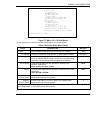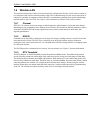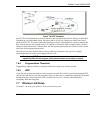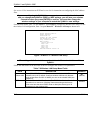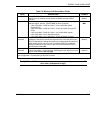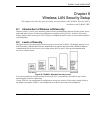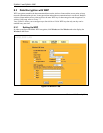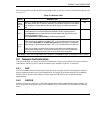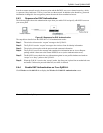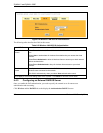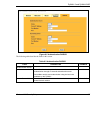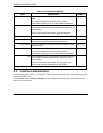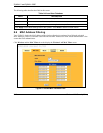
ZyWALL 2 and ZyWALL 2WE
Wireless LAN Security Setup 8-3
The following table describes the WEP related fields in this screen. For wireless LAN field descriptions refer
to section 7.7.
Table 8-1 Wireless LAN
FIELD DESCRIPTION EXAMPLE
Enable
Wireless
LAN
Before you enable the wireless LAN you should configure some security by setting
MAC filters and/or 802.1x security; otherwise your wireless LAN will be vulnerable
upon enabling it. Select Yes from the drop-down list box to enable the wireless
LAN.
No
WEP
WEP (Wired Equivalent Privacy) provides data encryption to prevent unauthorized
wireless stations from accessing data transmitted over the wireless network.
Select Disable to allow wireless clients to communicate with the access points
without any data encryption.
Select 64-bit WEP or 128-bit WEP to enable data encryption.
Disable
Key 1 to
Key 4
If you chose 64-bit WEP in the WEP Encryption field, then enter any 5 characters
(ASCII string) or 10 hexadecimal digits ("0-9", "A-F") preceded by 0x for each key.
If you chose 128-bit WEP in the WEP Encryption field, then enter 13 characters
(ASCII string) or 26 hexadecimal digits ("0-9", "A-F") preceded by 0x for each key.
There are four data encryption keys to secure your data from eavesdropping by
unauthorized wireless users. The values for the keys must be set up exactly the
same on the access points as they are on the wireless client computers.
Click Apply to save your changes back to the ZyWALL. Click Reset to begin configuring this screen afresh.
8.4 Network Authentication
You can set the ZyWALL and your network to authenticate a wireless client before the wireless client can
communicate with the ZyWALL and the wired network to which the ZyWALL is connected.
8.4.1 EAP
EAP is an authentication protocol designed originally to run over PPP (Point-to-Point Protocol) frames in
order to support multiple types of user authentication. By using EAP to interact with an EAP-compatible
RADIUS server, the access point helps a wireless client and a RADIUS server to perform mutual
authentication.
8.4.2 RADIUS
RADIUS is based on a client-sever model that supports authentication, authorization and accounting. The
access point is the client and the server is the RADIUS server. The RADIUS server handles the following
tasks:



